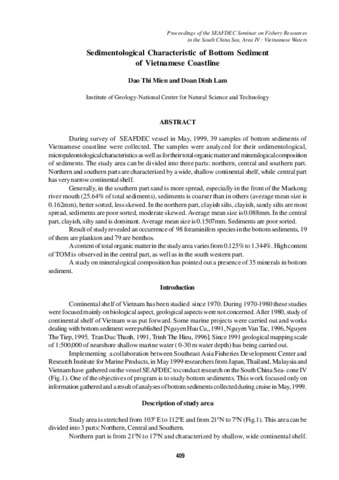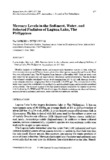| dc.contributor.author | Husain, Mohd-Lokman | |
| dc.contributor.author | Harith, M. R. | |
| dc.contributor.author | Maurice, J. | |
| dc.contributor.author | Rosnan, Y. | |
| dc.contributor.author | Kassim, K. K. Y. | |
| dc.date.accessioned | 2018-12-06T07:53:35Z | |
| dc.date.available | 2018-12-06T07:53:35Z | |
| dc.date.issued | 1999 | |
| dc.identifier.citation | Husain, M.-L., Harith, M. R., Maurice, J., Rosnan, Y., & Kassim, K. K. Y. (1999). Sedimentological characteristics of the sediments of the South China Sea, Area I: Gulf of Thailand and east coast of Peninsular Malaysia. In Proceedings of the First Technical Seminar on Marine Fishery Resources Survey in the South China Sea, Area I: Gulf of Thailand and Peninsular Malaysia, 24-26 November 1997, Bangkok, Thailand (pp. 34-53). Samutprakan, Thailand: Training Department, Southeast Asian Fisheries Development Center. | en |
| dc.identifier.uri | http://hdl.handle.net/20.500.12067/777 | |
| dc.description.abstract | Two batches of eighty sediment samples were cut from the first centimeter of sediment cores collected during September 1995, representing the pre-monsoon period, and April 1996, representing the post-monsoon period, at the same location. The sample were collected within the waters of the Gulf of Thailand and the eastern board of Peninsular Malaysia. The sediment samples were analyzed for their sedimentological characteristics using the techniques of sieving and laser diffraction. In general the sediments of the Gulf of Thailand is finer, better sorted, more peaked than that of the Malaysian waters. Skewness of sediments from Thailand waters was more positively skewed than the Malaysian sediments for the pre-monsoon period but tended to be more negatively skewed for the post-monsoon period. It is also interesting to note that in general, the sediments collected during the post-monsoon period are finer, better sorted, more positively skewed and less peaked than the sediments collected during the pre-monsoon period. This is true for both the sediments collected from the Gulf of Thailand and the Malaysian waters. Near-shore sediments were also found to be the coarsest, followed by the off-shore sediments. | en |
| dc.language.iso | en | en |
| dc.publisher | Training Department, Southeast Asian Fisheries Development Center | en |
| dc.subject | South China Sea | en |
| dc.subject | Gulf of Thailand | en |
| dc.subject | Malaysia | en |
| dc.title | Sedimentological Characteristics of the Sediments of the South China Sea, Area I: Gulf of Thailand and East Coast of Peninsular Malaysia | en |
| dc.type | Conference paper | en |
| dc.citation.spage | 34 | |
| dc.citation.epage | 53 | |
| dc.subject.asfa | sediment sampling | en |
| dc.subject.asfa | sedimentology | en |
| dc.subject.asfa | sediment analysis | en |
| dc.citation.conferenceTitle | Proceedings of the First Technical Seminar on Marine Fishery Resources Survey in the South China Sea, Area I: Gulf of Thailand and Peninsular Malaysia, 24-26 November 1997, Bangkok, Thailand | en |



